Garden design in the Netherlands is renowned for its innovative and aesthetic approaches. The people of the Netherlands, known for their tulip fields and meticulous landscaping, take pride in their expertise in garden design. Dutch garden designers are recognized worldwide for their ability to create versatile and sustainable green spaces. With an emphasis on sustainability, the Dutch garden design style often use eco-friendly materials and techniques to create visually stunning landscapes that are a direct response to the flat low lands that they inhabit. Through history, the country has birthed more than one major design movement it and it continues to be a place I love to look to for inspiring garden design.
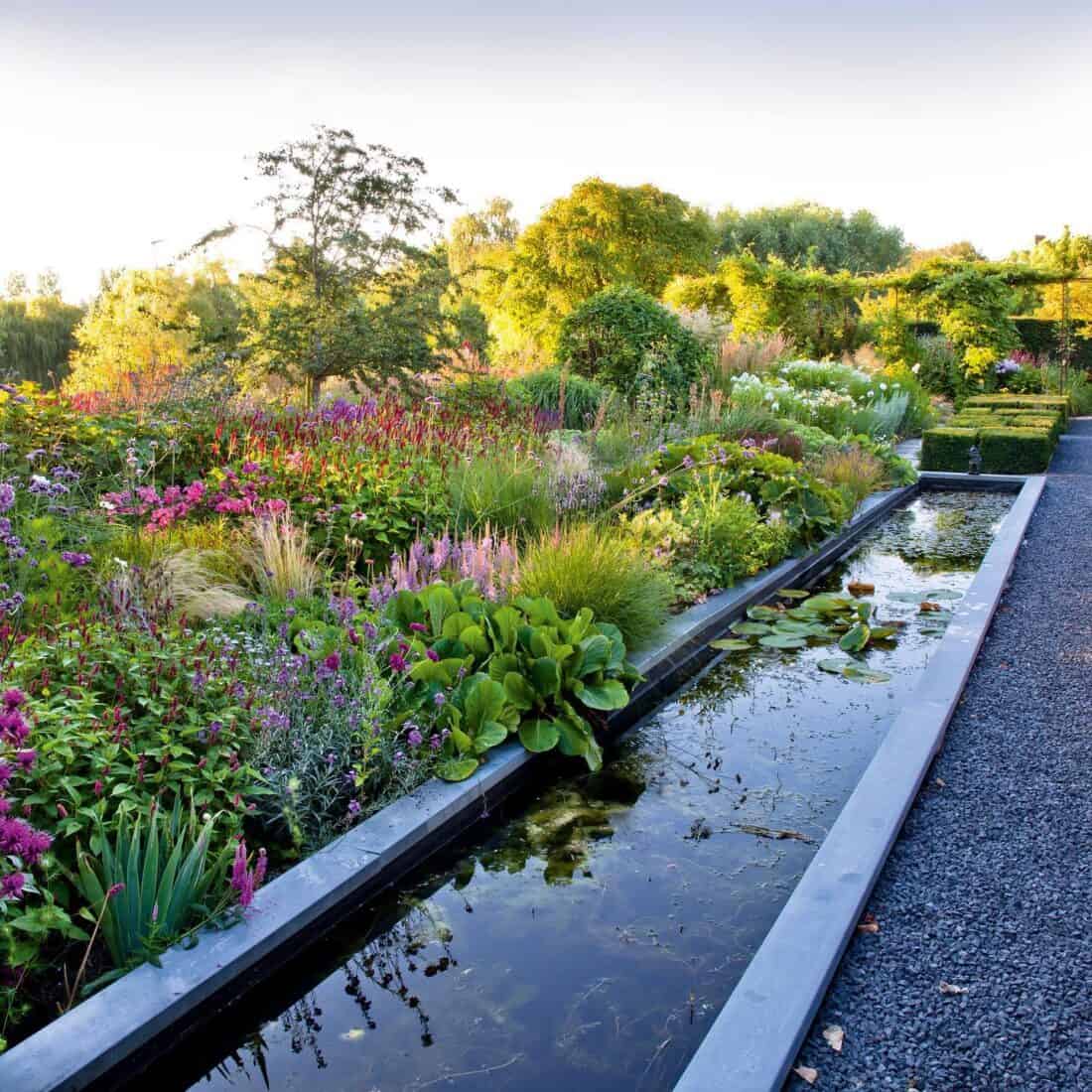
What Makes Dutch Garden Design Special?
It is not surprising to me that Dutch, Belgian and Danish garden design has developed as it has.
(I tend to combine all three of these country into one powerhouse area – called the lowlands – since their topology and climate are similar)
Working in a densely populated region that is flat and wet leads to certain necessities. Homes must be organized and in much the same way that American suburbs are laid out, often side by side on a rectangular pieces of land. Craving vertical relief, gardeners are drawn to hedges that break up sight lines and add interest on a human level.
For all the practicality that lowland gardens bring to the design scene, however, the Dutch Wave roused a a renewed interest for environments that were sympathetic to both man and nature. It has become a signature of Dutch and Belgian garden design to marry up the modern with an honoring of ancient environmental truths.
Ancient wisdom (shamanic knowledge), recognizes that while gardens have become a luxury, we cannot cultivate them purely for our aesthetic purposes.
We must find ways to balance our desire for beauty and nurturing with a commitment to ecologically sound living places for other creatures.

The Dutch Wave
The Dutch Wave – also called the ‘New perennial movement’ is a stylized planting style that emphasizes naturalistic planting schemes that mimic the beauty of wild landscapes.
These themes are heavy on the grasses and focus on perennials that have year round interest. The plants are typically left through the winter relying heaviny on thier dying structures to continue to create a visually appealing garden that last through the winter.
It’s all about creating gardens that are not only aesthetically pleasing but also sustainable and ecologically sound.
These gardens are easy to spot – they tend to have lots native and perennial plants in big swathes swaying gracefully in the wind, resembling a meadow (that is heightened with design) in full bloom.
The approach not only adds a touch of wild charm to your outdoor spaces but also attempts to better support local biodiversity and combat climate change by increasing planting density and variety and by reducing the need for resource-intensive maintenance.
The popularity of The Dutch Wave has brought a renaissance of wild plants to our attention as gardeners and has inspired new ways to combine them so that they have significant design impact.
Lowland gardens have taught us how to beautifully combine wildness with formality – and a touch of humor. Though the notion is becoming more commonplace, and it sounds a bit silly when I say it, but I credit the Dutch for reminding us that gardening can be inspired by nature.
Defining Dutch Style Garden Design – The Layout
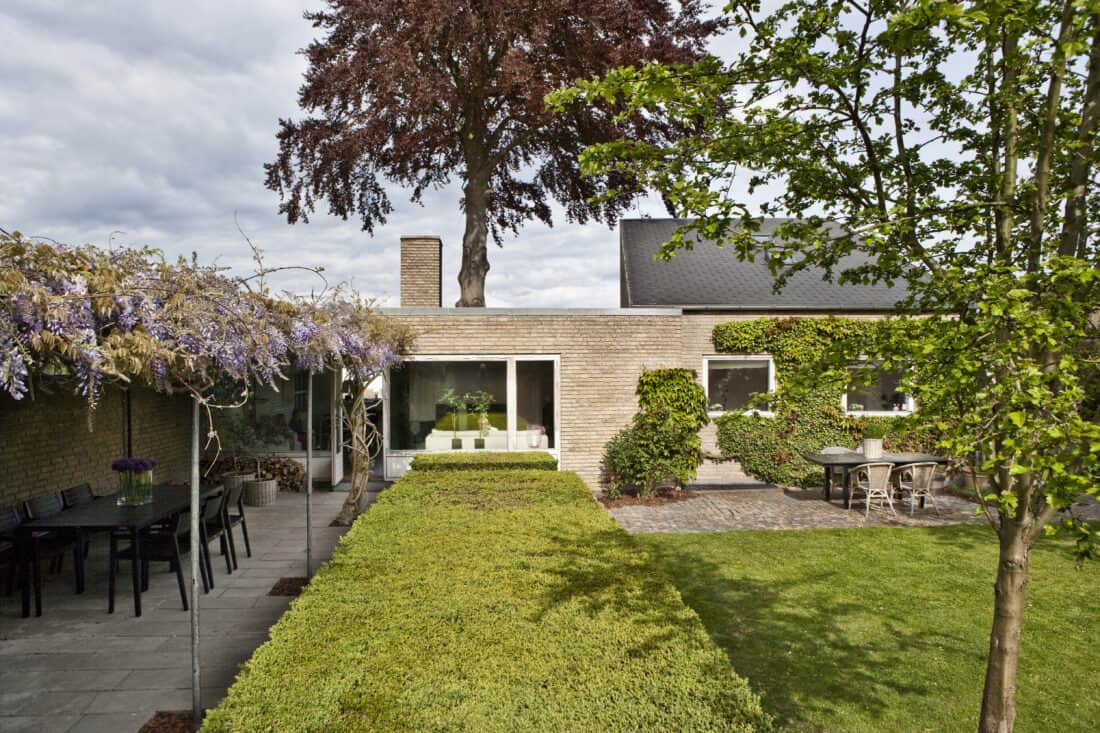
Bagn Højmark created this modern seaside home in 1957. The garden, which was part of the original design, has changed little since, but remains an inspirational vision of the low country design aesthetic. The patio is south facing and proves to be a comfortably sunny place away from the notable regional winds. The homeowners frequently enjoy outdoor dining, wine and the fireplace. The simple but elegant rectilinear design includes a trimmed boxwood hedge that is precisely 1 meter high, by 4 meters wide by 20 meters long and very precisely maintained.
Dutch-style gardens draw inspiration from historical and formal Dutch gardens of the 17th and 18th centuries. But they are also characterized by modern principles.
These are the Big ideas and things to keep in mind as you take inspiration from Dutch-style garden design ideas. These principles combine to create the distinctive beauty and charm associated with Dutch-style garden design, offering a harmonious blend of order, aesthetics, and functionality.
Rectilinear Formality
Dutch style gardens are recognizably rectangular and are often surrounded with hedges which add vertical interest.
Dutch gardens often feature symmetrical layouts with geometric patterns and shapes, including rectangular beds, straight paths, and precise hedging. Except within the planting, curving lines are rare.
Even the furniture is rectangular and geometrically shaped.
Garden design in the Netherlands has historically been associated with ordinary citizens (versus the royalty of French and English styles) and are well suited to suburban design worldwide.
Designers emphasize axial perspectives that draw the eye toward focal points, such as statues, fountains, or architectural elements.
They also regularly feature canals and water features that are part of the rectilinear layout and also tend to highlight the built-in and long perspectives. The water elements, also add a sense of tranquility and reflection.
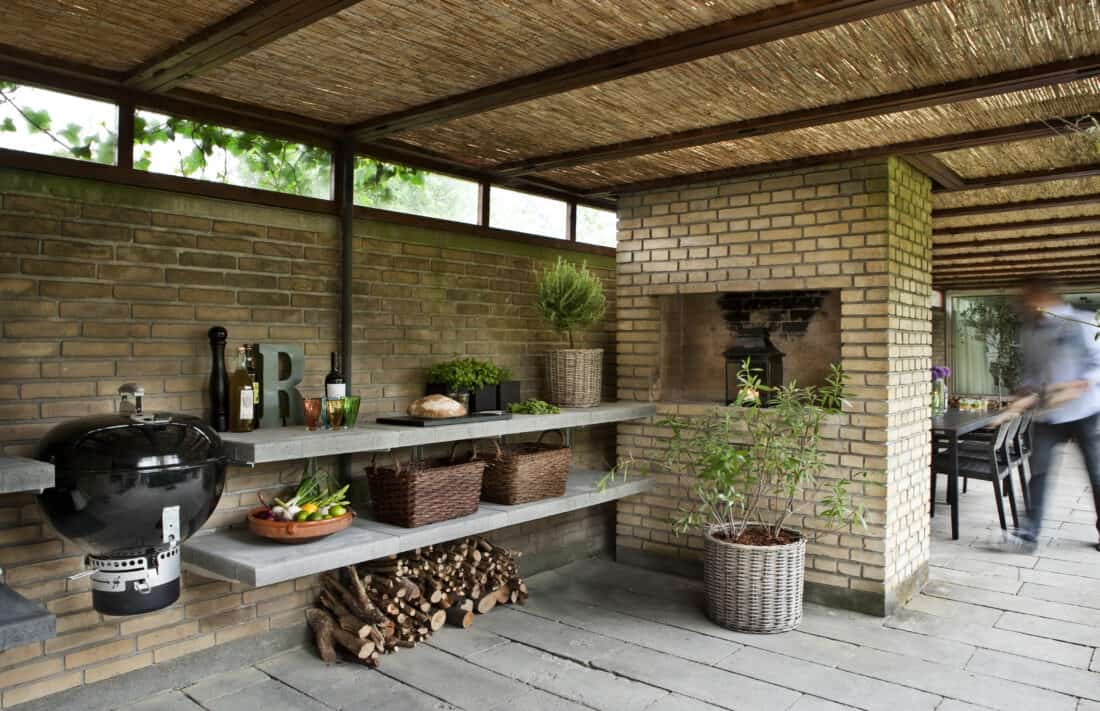
Organized Utility (that is also simple and pretty)
Functional spaces provide aesthetic pleasure as well as what people need to enjoy the garden. Generous eating areas with shade cover are practical and roomy and these gardens are dense with functionality and efficiency.
Dutch Gardens tend to be strikingly organized. Water butts, compost heaps, play areas, and planting areas are neatly incorporated. These features are often enclosed and separated by low barriers of boxwoods or other hedges, slat walls, or similarly dense and clipped border plants.
These gardens always provide a sense of enclosure as well. The walls that organize also are used to break up and enclose spaces. Tall, lush plantings or hedging often create a sense of privacy as well as shelter from the wind.
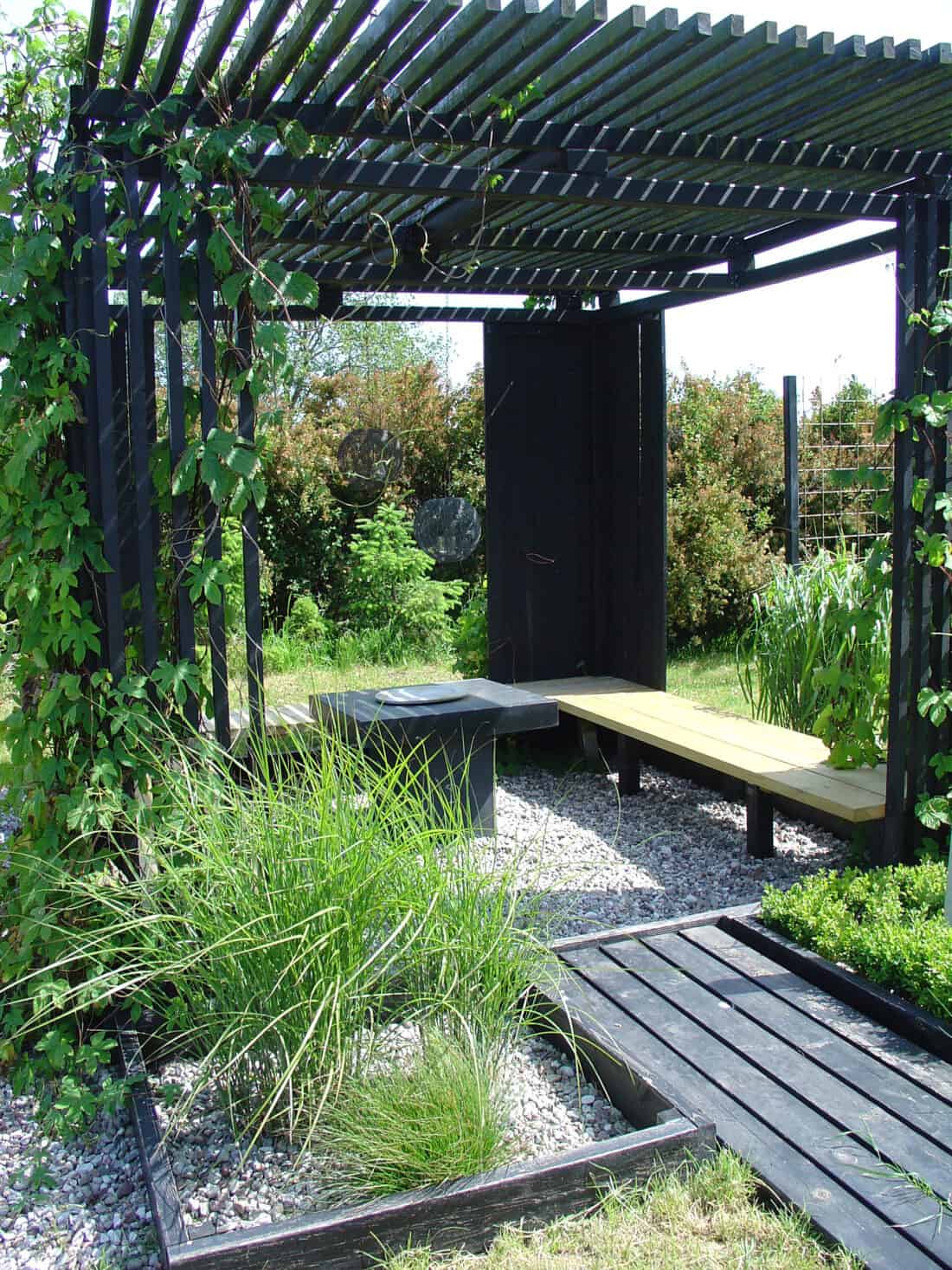
Color Coordination: Black, White and Shades of Grey
Dutch garden style employs thoughtful color schemes, with an emphasis on harmonious combinations that complement the overall design. In general the colors schemes are limited to simple 2-3 color palette or they embrace similar tones across more colors. You are unlikely to see lots of hot colors mixed with pastels for example or plantings that don’t have a harmonious color pattern.
Modern Dutch gardens also fearlessly embrace grey scales. Black can be scary in the garden but it lends a depth and is a surprisingly beautiful backdrop for plants.
Whites provide a crisp, clean contrast, and hues of silver and grey add a sleek modern touch or a warm aged patina.
>>> How to use the Seductive Qualities of Black Flowers in your Garden
>>> Garden Design Details – Black slats
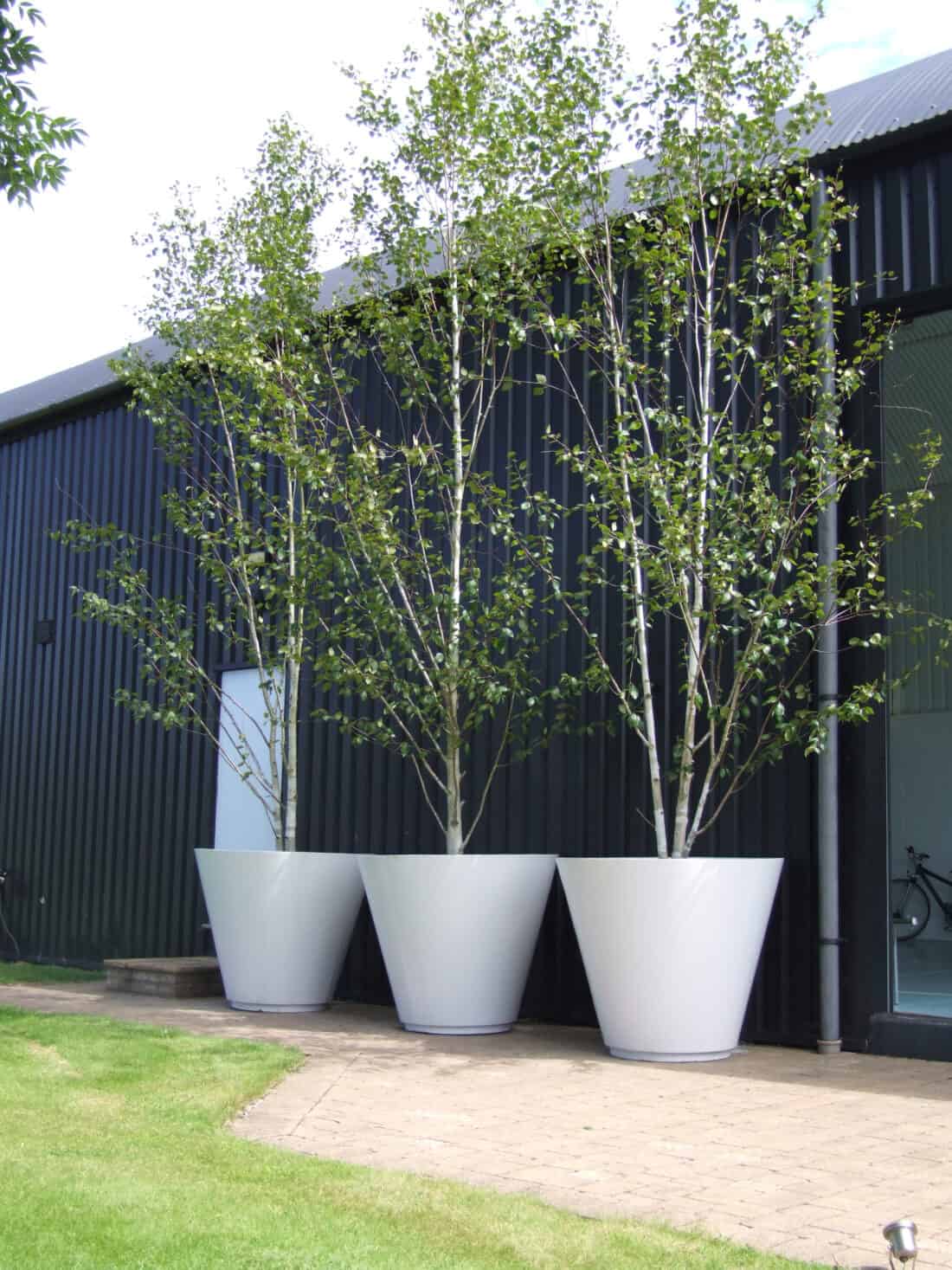
Slide the Scale – Dutch Design has a tendency to Play with Scale and Go Big
Oversized everyday items always spark a reaction. Seeing an item at a new scale challenges our perception of what it should look like. It makes us see in a new way – like a re-discovery.
Dutch gardens frequently use extra large pots in the garden. You can play with other large items like lights or architectural details, but pots are a great way to get the effect and add some sophisticated whimsy.
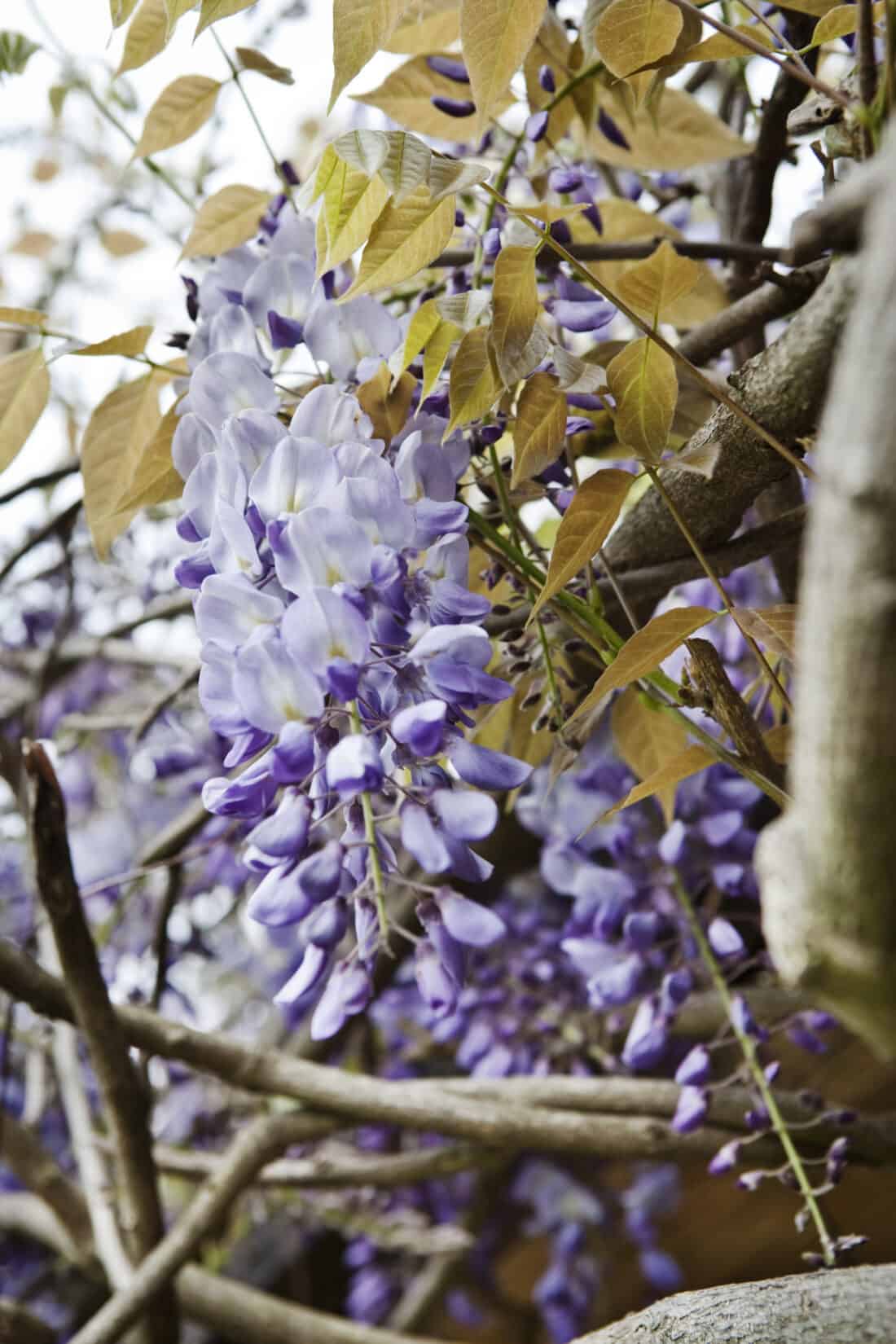
Planting the Dutch Way
Helpful Hedges
Hedging give this style of garden its structure. Often hedges are use to mark the boundaries, but additionally they provide an opportunity to create playful features. Privet, hornbeam, boxwood, holly, yew, juniper and many varieties of deciduous shrubs can be clipped in a traditional manner. (With chamfered sides and flat tops.) Or go a little crazy and give them wavy tops or taper them down to the ground and back up again.
It’s also common to see arial hedges. Arial hedges are trees, arranged in an allee and pruned so that they create a hedge on stilts.
Boxwood Hedging
Low boxwood hedging is a hallmark of Dutch gardens. Use boxwood hedges to delineate beds and pathways and create a sense of order.
Widespread grasses
Flowing grasses provide a modern and consistent element. Use tall and straight grasses as visual barriers and hedges. Flowy vase shaped grasses give movement to borders and short-mounded grasses can be excellent ground covers and edging plants. In the Dutch wave style of planting, grasses tend to make up at least 50% of the plant material. (And often substantially more than that). Grasses are the planting matrix that support many of the other perennials that complete this style.
Natural Materials
The use of natural materials such as brick, stone, and wood is favored for paths, walls, and decorative elements.
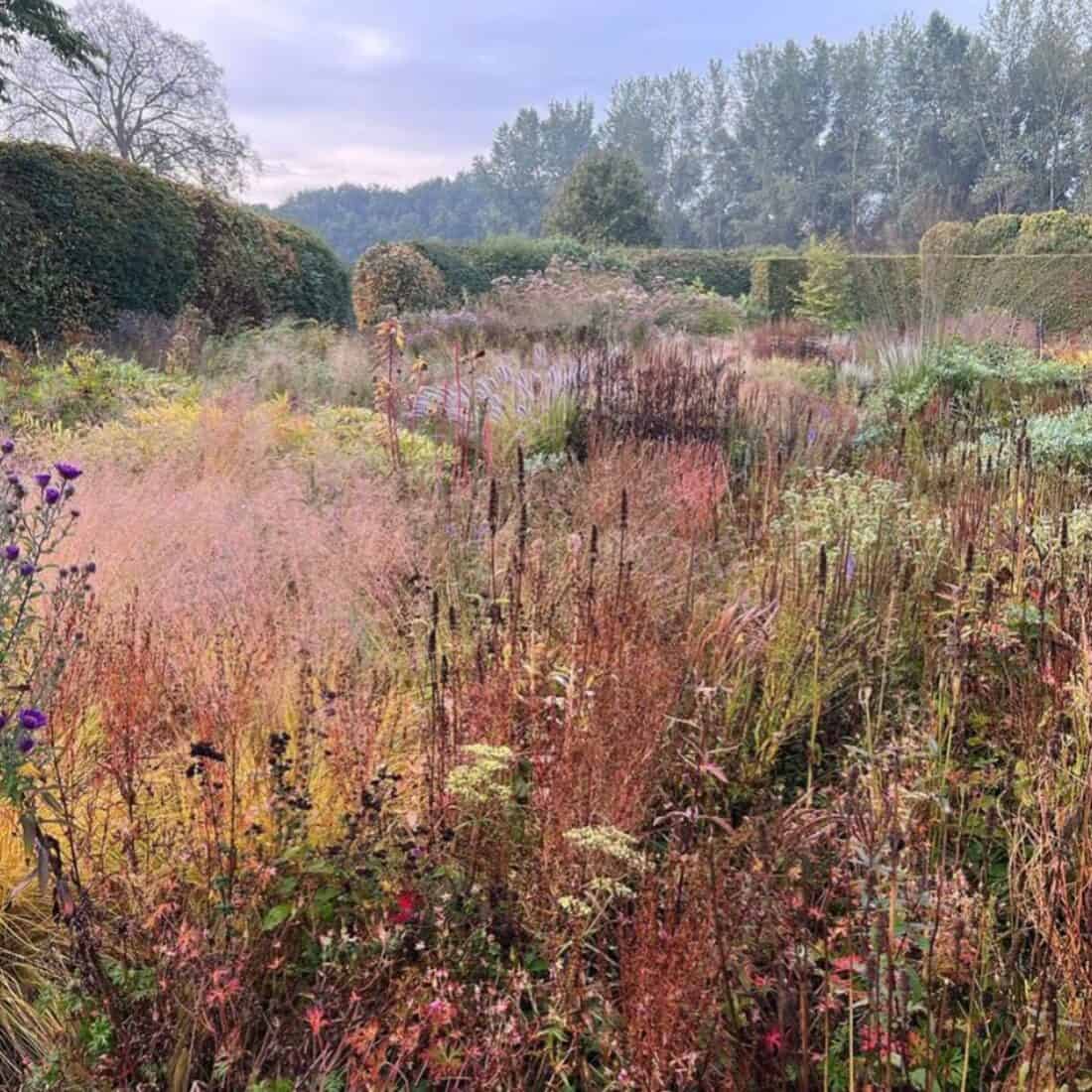
In addition hedging and grasses here are some other common elements of Planting Design in Dutch style gardens.
Common Elements in Dutch Wave Style and New Perennial Planting Design
- Ornamental Structures: Architectural elements like pavilions, gazebos, and trellises are used to provide shade and focal points within the garden. In many of the rectilinear designs these tend to be less ornate and aligned with the right angles of the garden layout. It is common, for example, to see a covered patio hugging the side flank of a property line and opening sideways towards the main part of the garden.
- Topiary: Dutch gardeners excel in creating intricate topiary designs, shaping shrubs and trees into geometric forms or whimsical figures.
- Bulb Gardens: Dutch gardens are famous for their bulb displays, particularly tulips and daffodils, which create vibrant spring spectacles. Stinzen gardens – which are lawns underplanted with spring bulbs – are also a common sight in spring. They are a beautiful feature that emerges and receeds before the rest of garden wakes up for the growing season.
- Seasonal Interest: Dutch-style gardens are designed for year-round enjoyment, with careful consideration of plants that provide interest in all seasons. PIet Ourdolf is famous for saying that he loves plants that are dead. This style aims to highlight the beauty in brown and decay.
- Pruning and Maintenance: Attention to detail in pruning and garden maintenance is crucial to achieving the neat and orderly appearance of Dutch gardens. These gardens feel wild but in fact are often carefully managed to maintain contrast between the clipped and formal and looser and more freeform types of plantings.
- Biodiversity: While formal in appearance, Dutch gardens often incorporate a diverse range of plant species to support local wildlife and promote ecological balance.
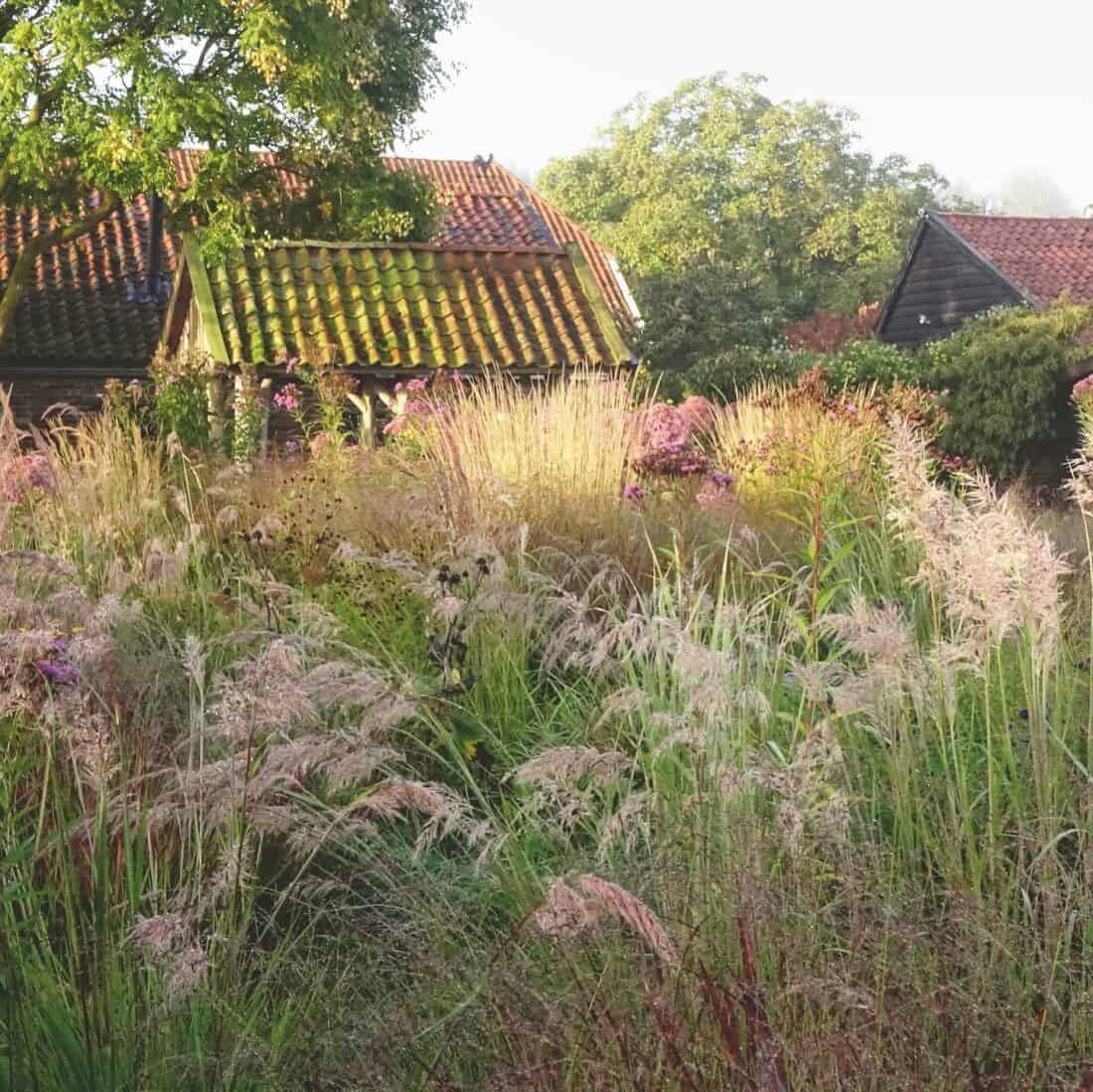
TL;DR Key elements of Dutch Garden Design style:
The Dutch have always seemed (to me) to be slightly shorted when it comes to giving nationalized gardening credit. Brits (deservedly) are the ones that everyone thinks of when you think of good gardeners, but I think that the Dutch ought to have a similar level of reverence. Nearly everything I see from Dutch designers, I love.
>>>13 Instagram Accounts to Follow for Dutch Garden Design Inspiration
Here are key elements of this Dutch Garden Design style:
- Long straight lines and rectilinear layouts
- Pleached trees and trees planted in allées as well as hedges that break up the long lines
- Rectangular pools, features and general layout
- Modern architecture and modern furniture
- Color schemes that revolve around grey, black, and white or tonal schemes.
- Oversized pieces – particularly planters
- Contrasting planting – formal clipped hedges with wilder naturalistic meadow-like planting.
comments +